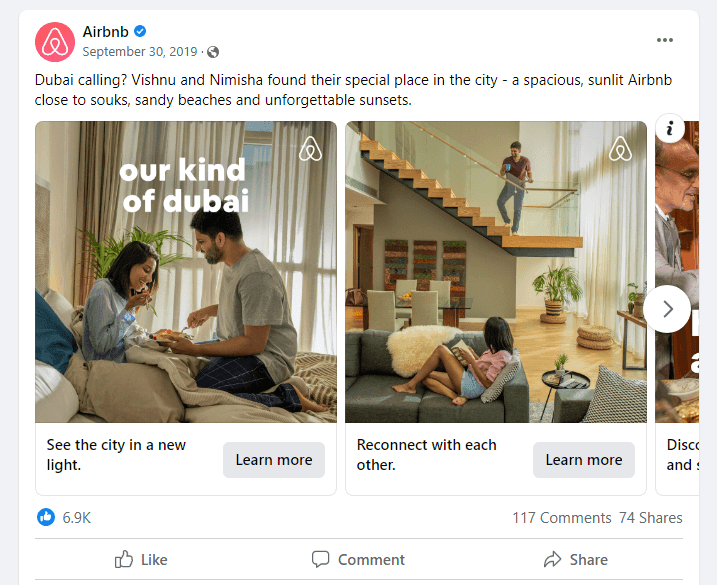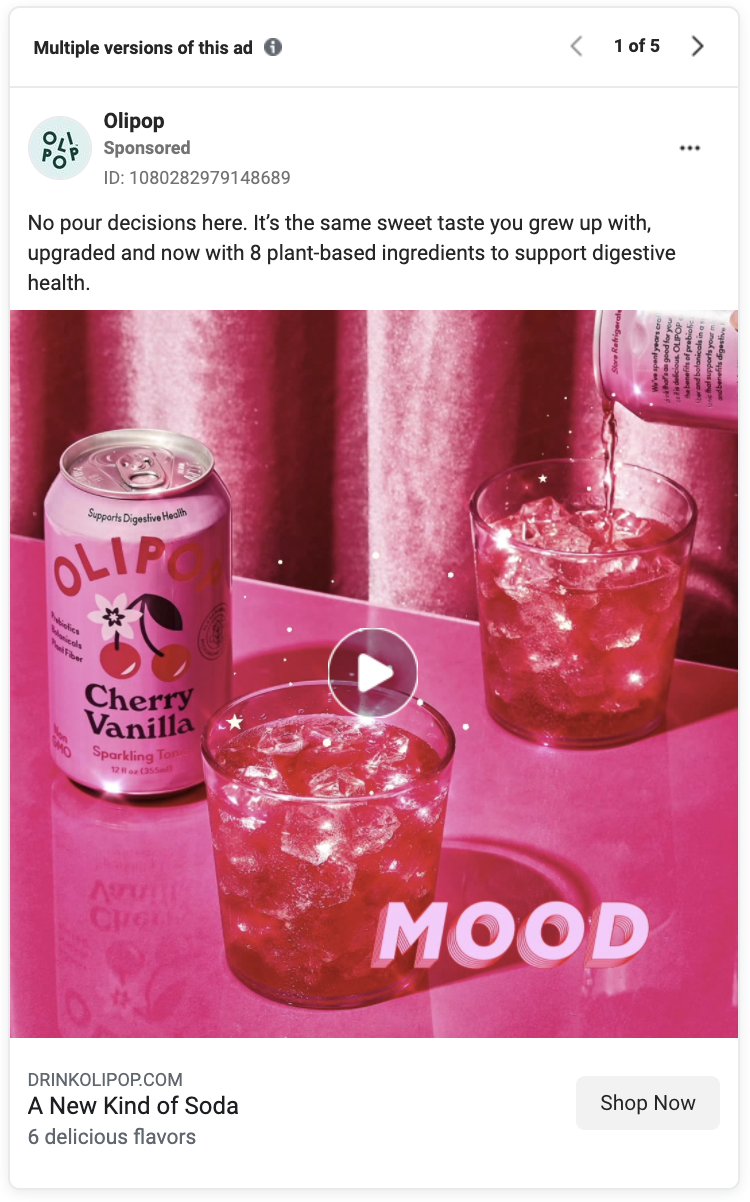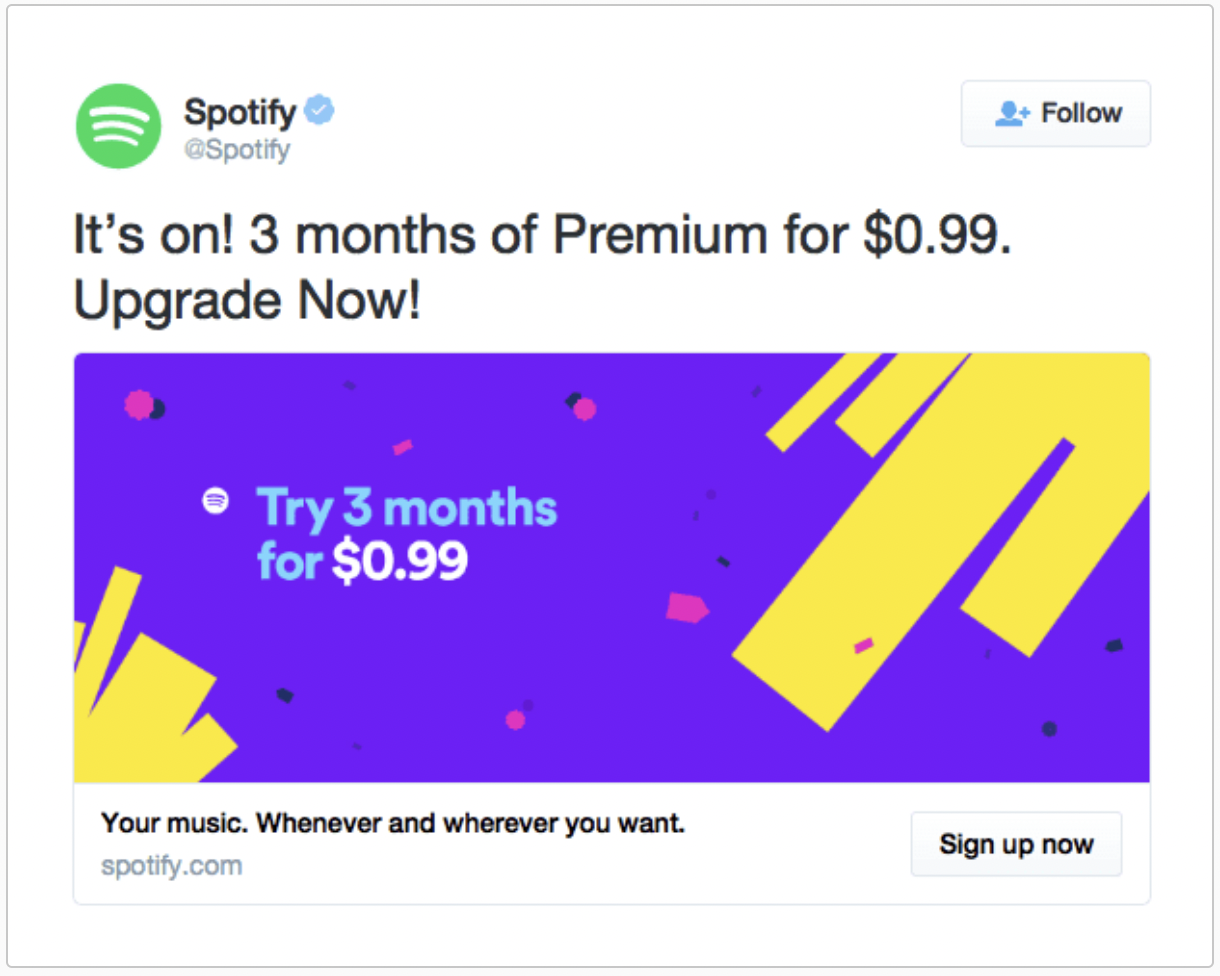For the last couple of years, whispers of retargeting’s demise have been circulating. More and more, we’re seeing strategies without retargeting included as a basic part of the funnel – especially in eCommerce. With privacy regulations tightening alongside user’s awareness of their own privacy rights, some wonder if this once-powerful strategic element has lost its edge after being a cornerstone of many Meta ads, TikTok ads and Google ads strategies for so long. But, is retargeting properly deadly? 🤔

Why retargeting has worked well as part of an ads strategy`
Let’s take a walk down memory lane and take a look at how retargeting has best been used in advertising in years previous (a memorial, of sorts)…
Re-capturing window shoppers
A staggering 96% of website visitors leave without converting on their first visit. Retargeting has allowed advertisers to reconnect with these potential customers, reminding them of their brand and the value they offer. See below an example from Olipop, a soft drink brand. They use retargeting to reinforce their marketing messages and pull those non-converters back in.

Addressing pain-points
Again, this one’s for those non-converters (the people that didn’t take the action you wanted – whether that’s to become a lead or buy something). You can use ads that directly address pain points like lack of trust (a common one for new brands) and price points (people are a bit price conscious) through showing reviews/testimonials or exclusive retargeting discounts – dangling carrots to pull them back in and increase your conversion rate! See below an example ad from Spotify offering discounts to retargeted users and another from Casper showcasing reviews for social-proofing.


Maintaining brand awareness and recognition
Consistent retargeting keeps your brand at the forefront of potential customers’ minds. Think of it as a subtle but persistent reminder that you exist and cater to their needs. This constant “presence” builds brand recognition, making your business the first they think of when the time comes to buy.

Personalising ads for increased engagement
Today’s platforms allow for highly personalised ad campaigns. Advertisers can cater their retargeting efforts based on a visitor’s browsing history, demographics, and purchase intent. Imagine an online candle shop retargeting a visitor who viewed a scented candle with a discount offer. This level of personalisation fosters a sense of connection and drives engagement. Below is another example from Airbnb using user’s page visits (likely) to segment their retargeting campaigns – dynamically showing specific locations to where the user is interested. Following this is an example from Monday.com showcasing their product in the context of the niche industry of Property Management.

Driving targeted conversions
Retargeting campaigns can be laser-focused on specific products or services. Did a visitor abandon their shopping cart at checkout? Retarget them with a reminder of the abandoned items and a special offer to encourage them to complete the purchase. This targeted approach significantly increases the chance of conversion. Below is an example of product-specific retargeting from Nasty Gal using Meta’s sales campaigns.

Addressing retargeting concerns
Privacy regulations
OK, so, onto the “meat” of this blog. What’s the big deal? Why is retargeting in jeopardy?
Data privacy regulations like GDPR (“General Data Protection Regulation” – a European Union law that sets standards for the protection of personal data) and CCPA (“California Consumer Privacy Act” – a state law in California, United States similar to GDPR) undoubtedly impacted retargeting practices. Following these regulations, the roll-out of Apple’s iOS 14.5 really was the last nail in the coffin.
All in all, laws and regulations such as the above makes this hyper-segmented approach to retargeting a lot more tricky. Some add-to-carts get lost, so do some events matched back to specific users. So that means your retargeting doesn’t always reach your entire audience. This is where CAPI can help to recover some of those lost conversions. But furthermore, prospecting campaigns have actually become like retargeting in a way.
To address the former point – hyper segmenting now means even smaller lists than before due to reduced accuracy of tracking and loss of some control. This can drive frequency (see below) up and quicken ad fatigue and the general feeling of being “pestered” by brands.
Definition: Frequency
(Reach / Impressions = Frequency)
Frequency is, on average, how many times a single person will see your ads. If you have a frequency of 2, on average, each person will see your ads 2 times during your selected timeframe. The benchmark frequency is 1-2 per adset.
A quote from adscook states, “Custom Audience sizes are shrinking and the budget you used to allot for Facebook retargeting will no longer give you the same results. It’s not reasonable for you to keep adjusting your budget for Facebook retargeting ads after iOS 14. Nor is it sustainable to spend thousands more because Apple brought down the hammer.” Now, adscook here goes on to state that you just need to adjust your remarketing strategy instead of binning it altogether. The strategies they have recommended here from what I can assume was a couple of years ago, includes widening your RM audience to around 180 days, using other objectives with more data like add to carts and finally, just remarketing on other channels less affected. Now, let me tell you, all of these strategies have been stress-tested by yours truly as well as other digital marketers globally and they simply do not cut the mustard. I mean, think about it logically, if you viewed a pair of shoes on a website 6 months ago, would you be interested in seeing an ad about them or do you think you would have moved on by then? How about bigger more time-sensitive purchases like wedding dresses, cars, or even houses? Don’t think so. It just doesn’t work as effectively and quite frankly, it seems like a waste of budget.
There are, however, a couple of good recommendations here including using CAPI (conversions API) as well as uploading first-party data. We can definitely get behind those to make some improvements and test to see if you can get some results (even if they don’t have a scratch on your former success!)
On our second point, prospecting has become quite powerful now all on its own. You might find your prospecting campaigns have a frequency of 2-3 at times – meaning your prospecting is retargeting users. Not to mention, Meta themselves are actively removing detailed targeting exclusions. While this doesn’t fall under remarketing exclusion (like excluding site visitors etc. it does showcase their intentions) meaning they’re actively working against advertisers who want to create more niche campaign targeting. So, it feels like retargeting is almost working against platform best practises or will do in the near future.
The future of retargeting
While retargeting used to be the source of extremely high ROAS and extremely low CPA for our ad accounts – the future of retargeting is, honestly, unclear. We’re just not seeing those same results for a lot of accounts while it does still work well for some. From our first-person perspective, we’re finding the effectiveness of retargeting changes from business to business, industry to industry. For some, advanced segmentation works for retargeting still. While for others, you can let automated bidding strategies take the wheel – pushing your full funnel into several prospecting campaigns and allowing frequency management and ad rotation (to avoid fatigue) take the forefront of your attention. Honestly, remarketing is good to test. However, we’re not going to keep pushing it if it’s not going to drive as profitable of a CPA as other strategies without it. But, that’s just us. So really, the question of “is retargeting dead?” falls to you and your account – it really should be, “is retargeting still right for you?” as it’s not something we recommend on every ad account anymore. What do you think?



